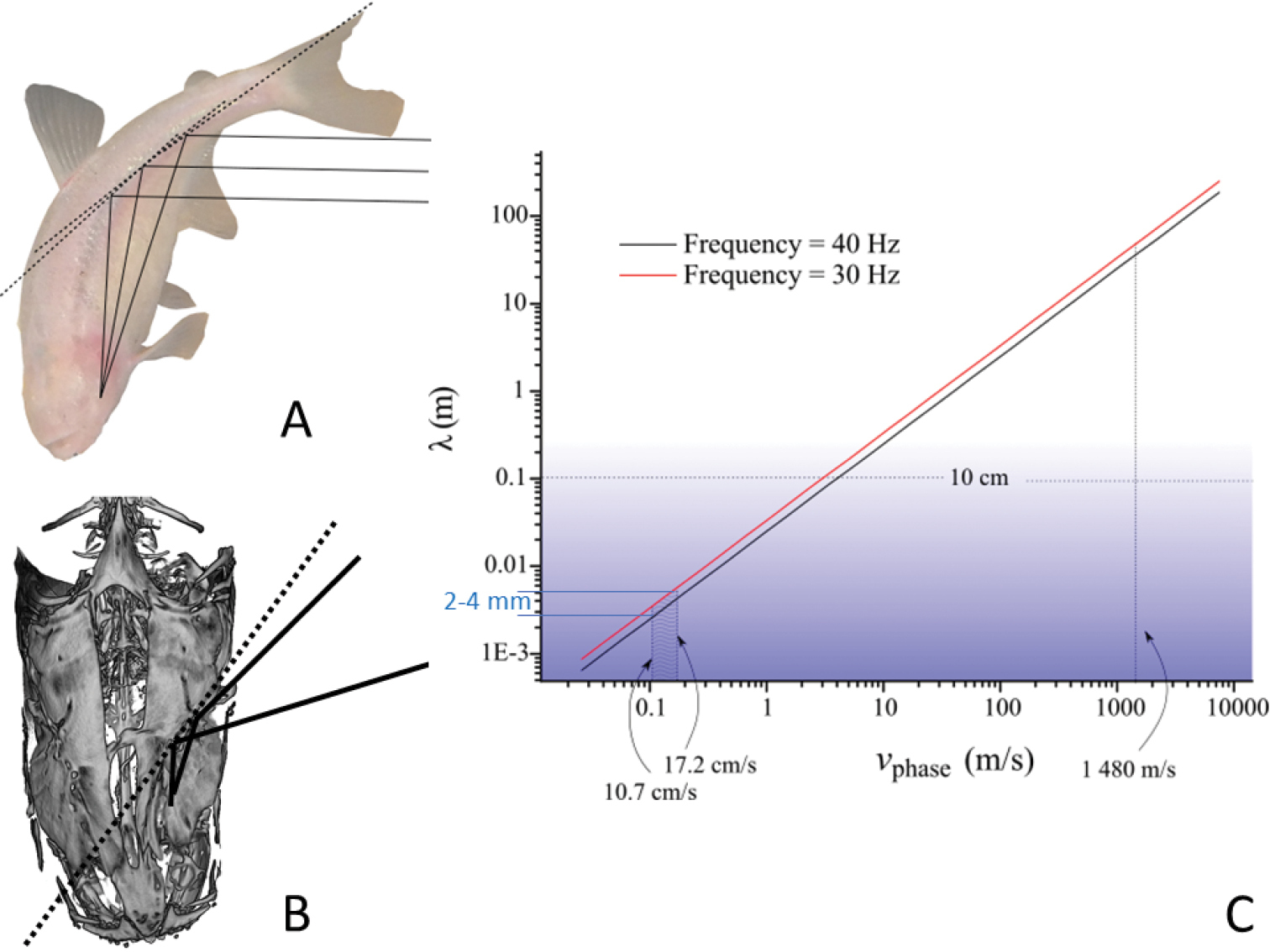
|
||
|
A schematic depiction of a plane wave (rays) reflected on the fish’s body. In this case, the waves are being amplified towards the head neuromasts. The black dotted lines represent tangents to the fish lateral line at the reflection points B deflection of plane waves on the bent skull of a cavefish C wavelength is plotted against every phase velocity between 2 cm/s and 10,000 m/s (logarithmic scale). The blue shade aims to highlight the wavelength region for which parabolic amplifiers can work in a 10 cm long fish. Clearly, the speed of sound (1,480 m/s) is off limits for frequencies at around 35 Hz, but surface ripples that travel at 10.7–17.2 cm/s are within the proper wavelength range to be efficiently reflected by structures of a minimum length of 0.2–0.4 cm. Thus, curved bodies of a fish when circling around a vibrating stimulus or a bent skull can theoretically serve as amplifiers for the ripple waves generated by prey, but not for the sound that prey also produce. Skull images modified from Gross et al. (2014). |